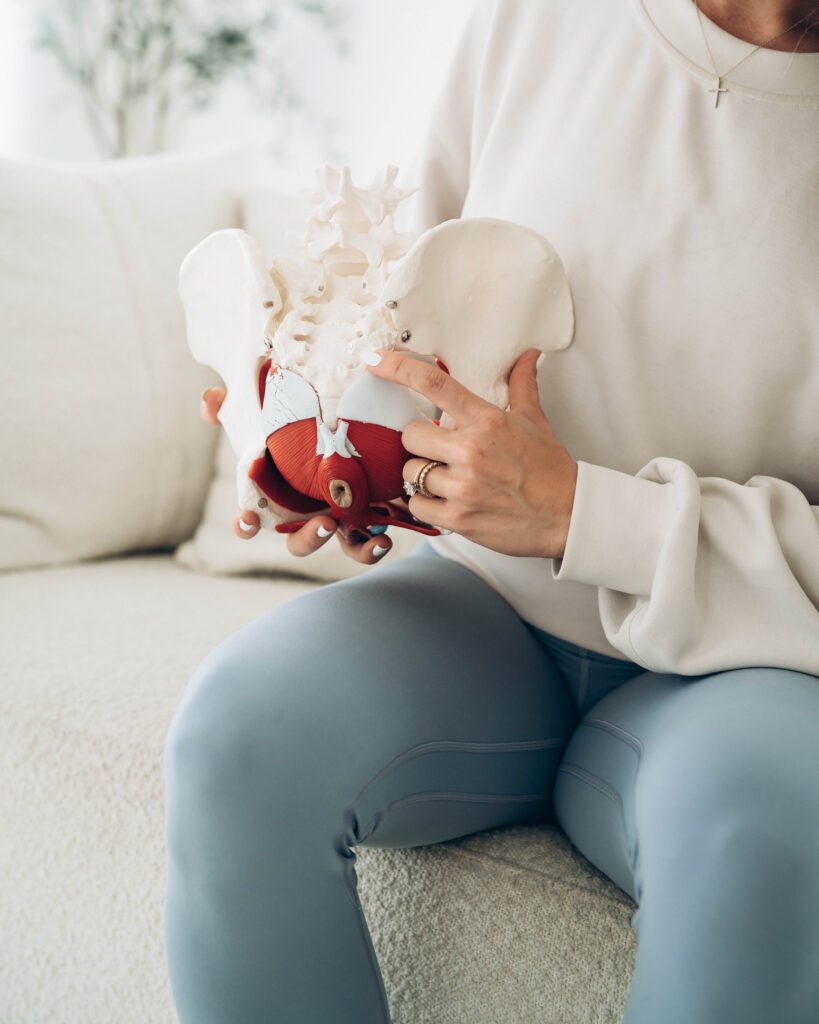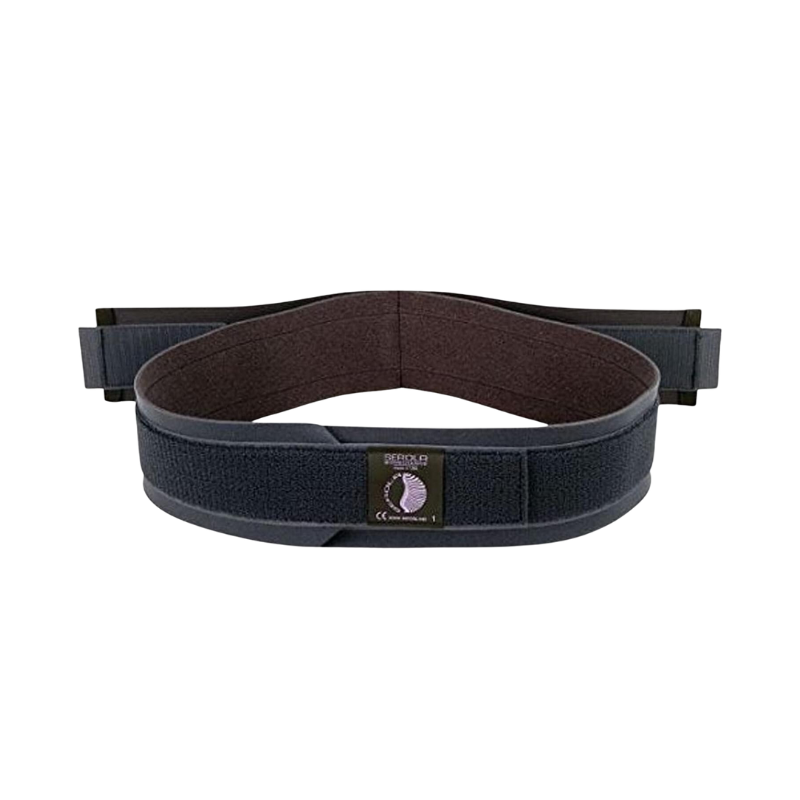5 Tips to Relieve SI Joint Pain

Disclosure: I only recommend products I would use myself and all opinions expressed here are our own. This post may contain affiliate links that at no additional cost to you, I may earn a small commission.
When the SI joint is dysfunctional, it brings a whole new meaning to “pain in the butt.” This major joint in the body can cause aches and pains for all people, from pregnant mamas-to-be to aging men and women to athletes who have experienced an injury. SI joint dysfunction can cause tingling, pelvic pain, numbness, and low back pain that comes with the inability to sit or sleep for long without discomfort. It’s a very uncomfortable condition, but you don’t have to live with it forever! Today, there are lots of ways to reduce or even eliminate your SI joint pain for good.
What is the SI joint?
The sacroiliac joint, commonly referred to as the SI joint, connects your two hip bones (ilia) to your tailbone (sacrum). It’s technically two joints, and it’s a very sturdy part of the body in most individuals. This large joint is surrounded by thick tendons and ligaments to keep everything in place. However, injury, aging, and pregnancy can all affect the stability and the function of the SI joint, leading to sacroiliac joint pain that can really disrupt your day-to-day life.
Why does SI joint pain occur?
SI joint pain can take many forms. Some patients report a dull ache, while others refer to a sharp pain when standing, sitting, or lying down. Pain begins in your SI joint, but it often travels to your buttocks, groin, back, or thighs over time.
Arthritis can cause sacroiliac joint dysfunction, especially as you age, and injuries can cause your joints to fall out of alignment, which causes pain. These injuries are not always huge and traumatic, though — repetitive stress caused by running or high-intensity exercise can cause inflammation in your SI joint as well.
Perhaps the most common cause of SI joint pain? Pregnancy! There are several reasons for aches and pains during pregnancy, from your SI joint to symphysis pubis dysfunction (SPD). Remember those thick ligaments and tendons I mentioned earlier? During pregnancy, hormonal shifts allow your pelvic tendons and ligaments to loosen to prepare your body for childbirth. This is fantastic for labor and delivery, but it can cause a lot of discomfort in the months before your baby arrives.
Additionally, pregnancy often comes with weight gain that adds strain to your SI area and posture changes that can cause problems. An anterior pelvic tilt lets your belly hang forward, while a posterior pelvic tilt tucks your buttocks underneath — and both can cause pain over time. Talk to your provider or pelvic floor PT about proper pregnancy postures to limit this pain.
Who is most susceptible to SI joint dysfunction?
There’s not just one group who deals with SI joint pain. Many pregnant women face this issue, but I see lots of young and middle-aged women in my office who deal with SI joint dysfunction from sedentary jobs, improper posture, or inflammation from physical activity. Older adults also face joint pain from arthritis or general degeneration from age.
5 ways to relieve SI pain
If you’re dealing with SI joint pain, no matter the cause, these five tips can provide you with some much-needed relief.
1. Reduce or avoid aggravating activity
Asymmetrical activities can be aggravating when dealing with SI joint pain, so maintaining hip symmetry can be helpful when in acute pain. Take the elevator instead of the stairs when you can, roll in and out of bed with both legs at once, and get in and out of your car with your legs together when you can. You can’t avoid stairs, sleeping, and vehicles, of course — but you can focus on moving slowly and trying to keep your legs closer together rather than spread far apart.
Also, as you find yourself sitting or lying down, try to keep your legs and hips aligned! This means sitting with both feet on the floor rather than crossing your legs, and lying on your back rather than twisted to one side.
2. Focus on posterior oblique strengthening
Your posterior obliques offer muscular support to your lumbar spine, SI joint, and hips. There are many exercises that target your posterior oblique sling, a group of muscles that wraps around your back from below your armpit, crosses over at your SI joint, and stops at your opposite glute. Try this exercises at home to strengthen this muscle group and reduce pain:
Exercise Example: Bird dog row
In this exercise, the focus is on maintaining an engaged deep core as you row with one arm and extend your opposite leg.

Expert tip: Keep your pelvis level throughout the exercise, as if you had a cup of water on your back that you do not want to spill over!
3. Focus on deep core strengthening
It’s always helpful to strengthen your deep core muscles — yes, even if you’re pregnant! My Movement Through Pregnancy program offers safe and effective week-by-week workouts for expecting mamas that will train your body for labor, delivery, and motherhood, as well as reducing common pains during each trimester. Each week features a specific pelvic floor and core workout, designed to target your deep core and hip musculature to improve pelvic stability.
Another way to help your deep core: practicing good posture. Talk to your PT about the proper posture for sitting, standing, and lying down. If you’re pregnant, avoid the excessive anterior and posterior pelvic tilt, instead focusing on maintaining a neutral posture. And no matter what stage of life you’re in, finding symmetry in your posture can help strengthen your core and reduce your pain. Try this move at home:
Exercise Example: Quadruped alternating arm extension
Gently squeeze a ball between your legs and maintain an engaged deep core as you alternate lifting one arm, then the other. Keep your pelvis as still as possible as you do!

Expert tip: Think about pressing your hands through the floor to keep your shoulder blades engaged and prevent sinking into your shoulder joints.
4. Improve mobility
Stiff joints and immobility can contribute to sacroiliac joint dysfunction, so it’s important to incorporate mobility movements into your regular routine! Improving mobility of your pelvis and the musculature surrounding your pelvic girdle is a key piece of the SI joint pain relief puzzle. Stretching does not typically solve or prevent all SI joint pain, since the root cause is most often decreased stability. That said, gentle, active mobility can often help to release tension in the surrounding areas — just follow it up with strengthening! Start with this mobility move I love:
Exercise Example: Adductor rotation
This exercise is great because it targets so many areas at once. It helps to release tension in your inner thighs as well as improve thoracic mobility, which, believe it or not, plays a large role in pelvic floor function. Remember: it’s all connected!

Expert tip: Think of sitting your butt straight back without rounding your spine to really open up the back of your pelvic floor.
5. Add in external support
As you’re healing and reducing SI joint inflammation, you may want to consider adding in support garments to assist your body. I have a few pelvic floor and core support garments that I used (and loved!) during my own pregnancy and postpartum season.

If you’re looking to support your SI joint at any time, this support belt was designed to do just that. I love it and recommend it to in-person patients all the time!
Relief is around the corner
These five tips can offer symptom relief, but as always, I truly believe a pelvic floor physical therapist should always be your first point of contact for professional help with pain and dysfunction. Here’s a helpful guide for when to see a pelvic floor PT during pregnancy, postpartum, and in general with pelvic pain or dysfunction. Relief could be right around the corner – don’t give up!